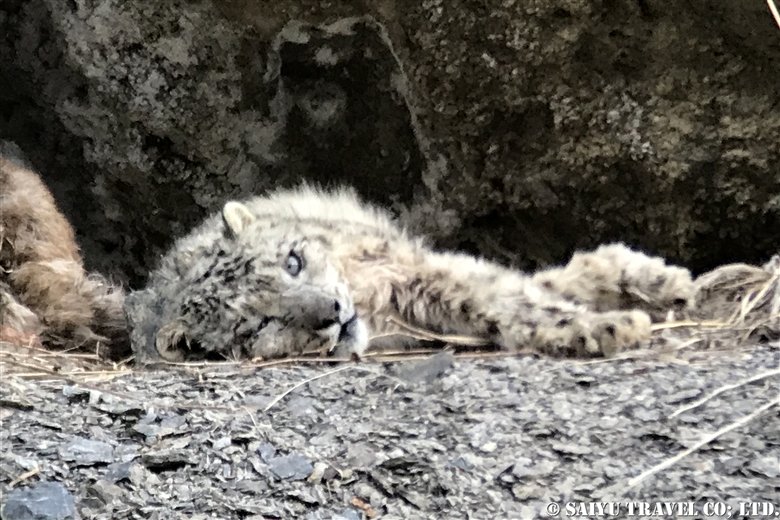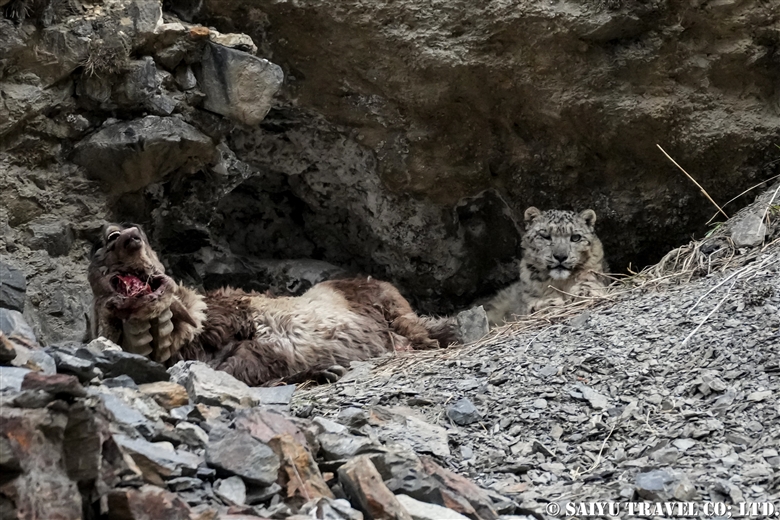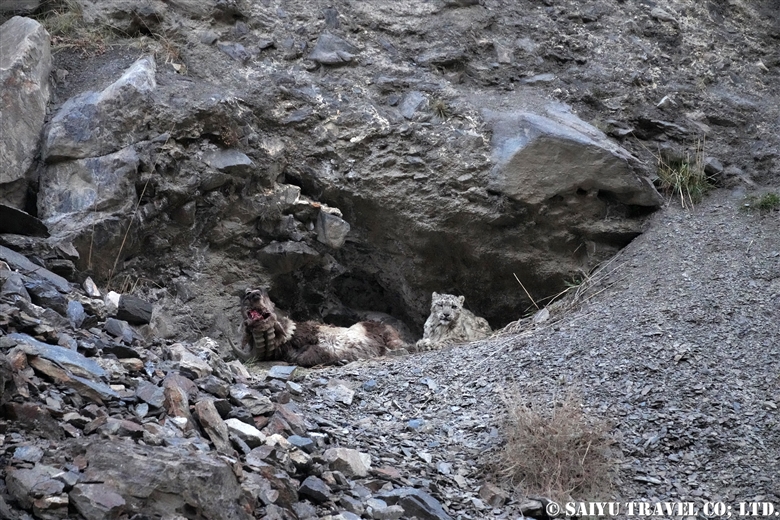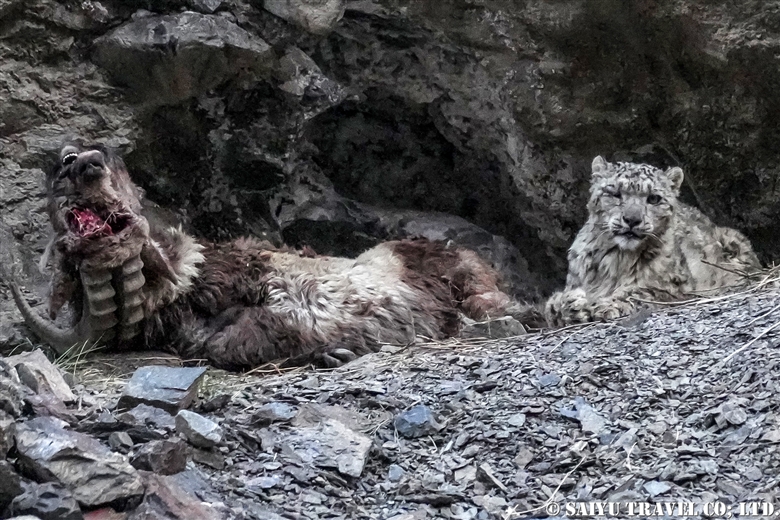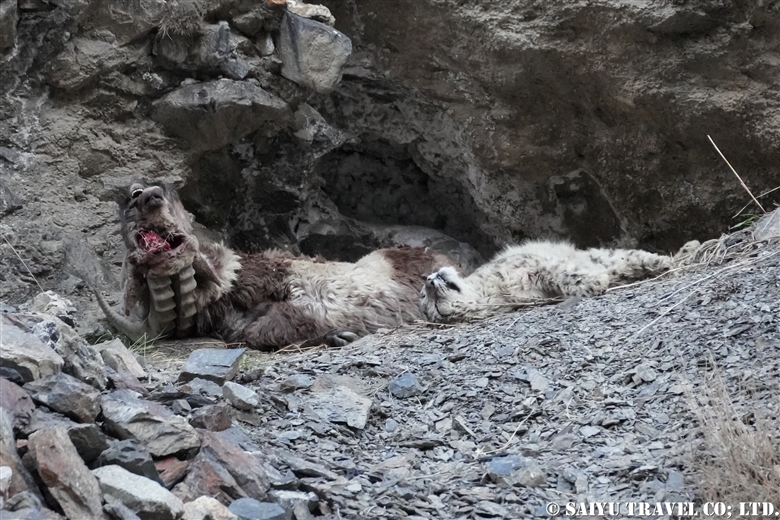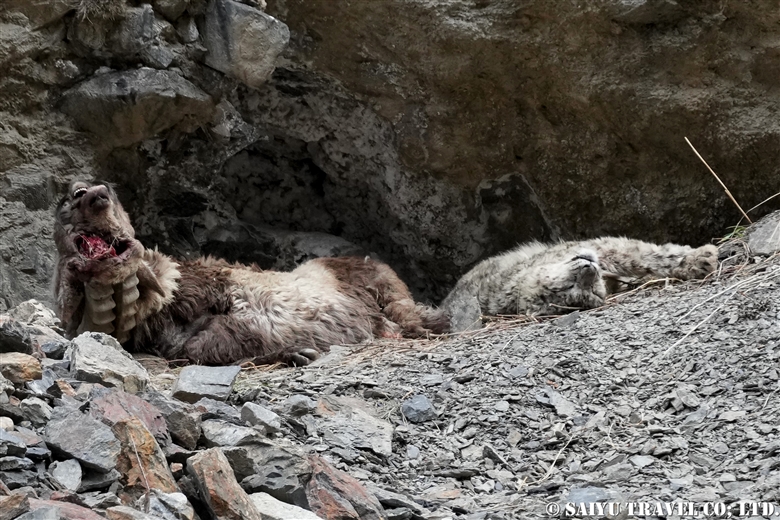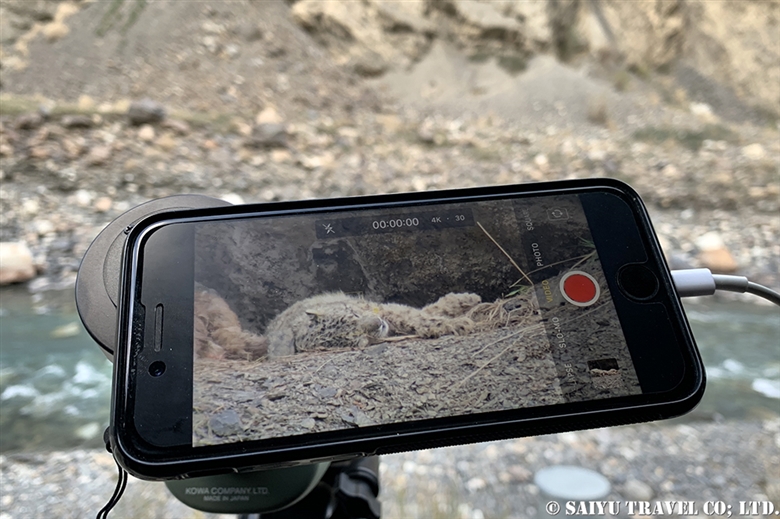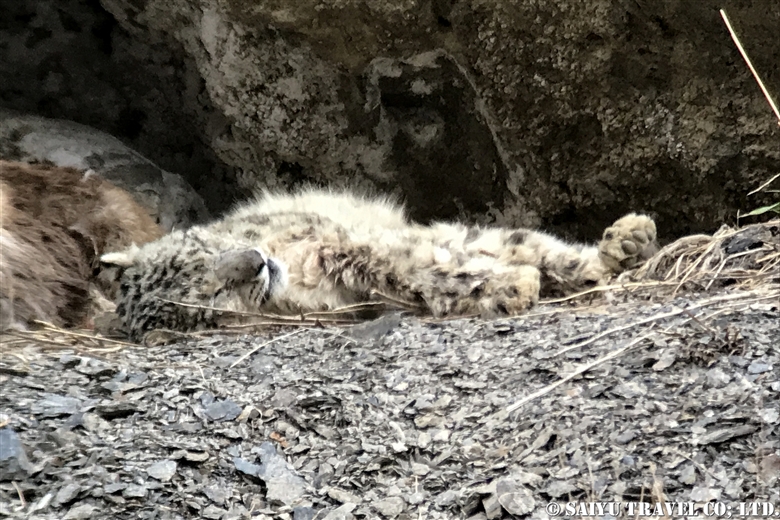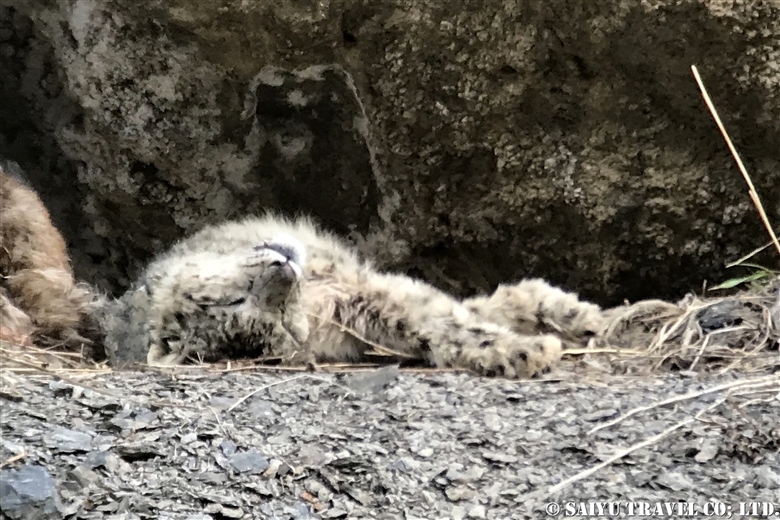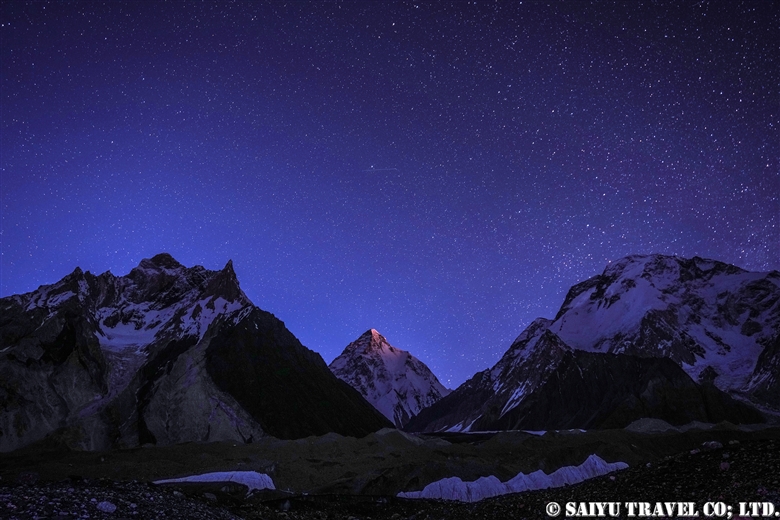
This is Concordia, The end of the Baltoro Glacier trek. It is a sought-after destination surrounded by 360 degrees of high peaks like K2.
In Latin, the word “Concordia” means “confluence and harmony,” and was given this name due to it being a confluence point between the Baltoro and Godwin-Austen Glacier. From here, climbers will set out for peaks like K2, Broad Peak, Gasherbrum Mountains Basecamp, and the Gondogoro La (Pass).
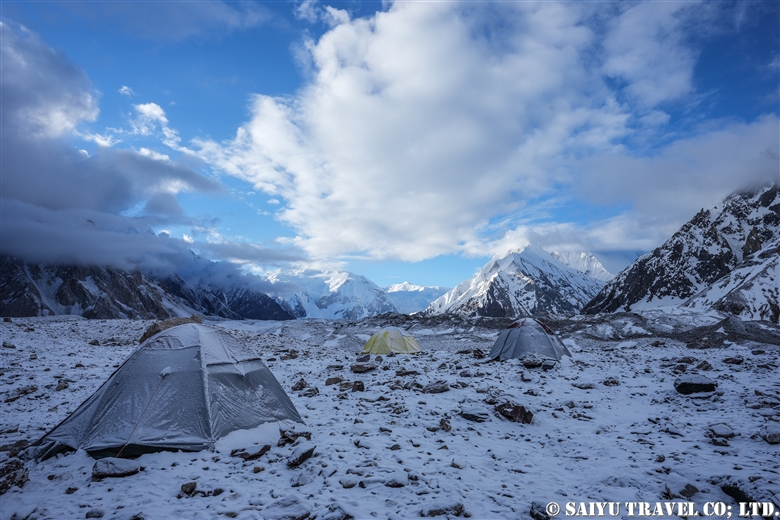
The first morning after our arrival in Concordia, the camp was covered with fresh snow. With patches of blue sky coming through and since the forecasted weather was clear, I took the opportunity for a photo op, since we made it all the way here.
K2 & Baltoro Glacier Trekking 2022 (Part 1) Skardu to Paiju
K2 & Baltoro Glacier Trekking 2022 (Part 2) Paiju to Khoburtse
K2 & Baltoro Glacier Trekking 2022 (Part 3) Khoburtse to Urdukas
K2 & Baltoro Trekking 2022 (Part 4) Urdukas to GoreⅡ
K2 & Baltoro Trekking 2022 (Part 5) GoreⅡ to Concordia
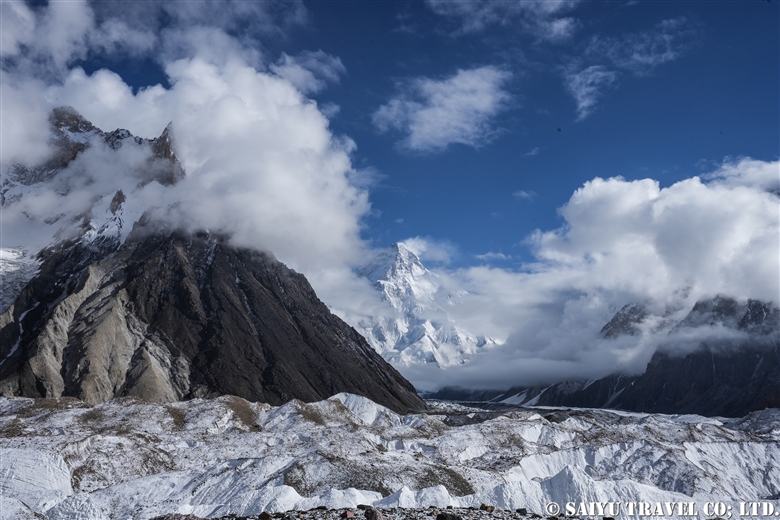
K2 emerges from the clouds, just beyond the campground. It was a moment I had eagerly anticipated, finally seeing the mountain break through the clouds.
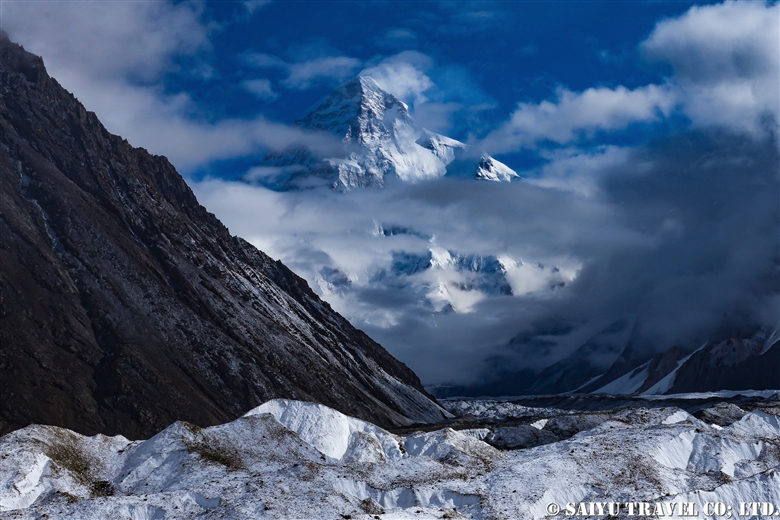
The view of K2 got even better. At 8,611m it is the second highest mountain in the world, just after Everest. It is a majestic mountain.
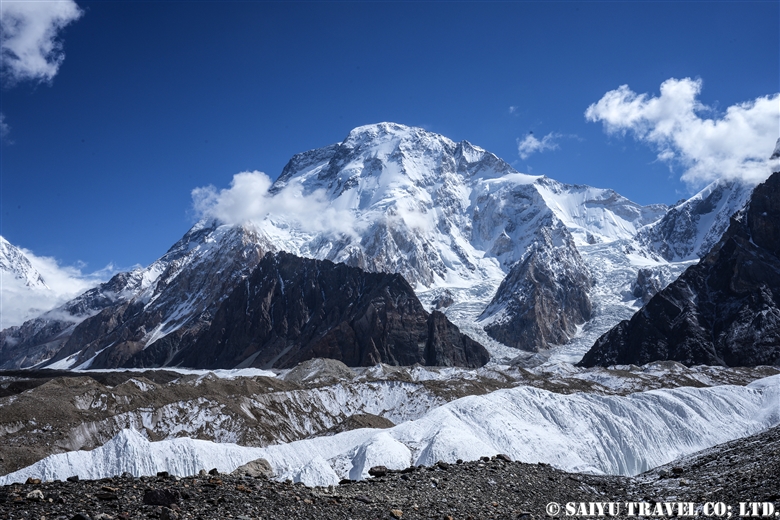
This is Broad Peak (8,051m) which came into full view before K2. Broad Peak, as it is aptly named, has a wide peak. It is the 12th highest mountain in the world and is also the first mountain to be scaled for the 8,000m Summit Challenge.
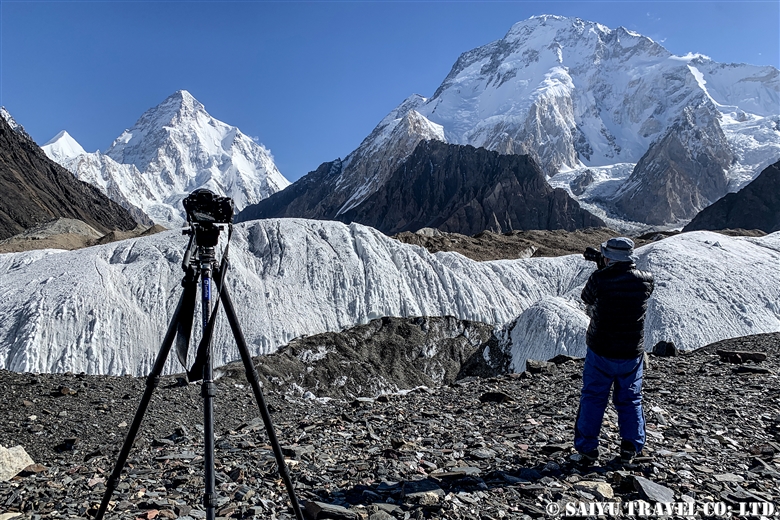
Not a cloud in the sky. A short walk from the campsite, this was taken from a place where we could see Angel Sar (6,858m). Just east of here, we can see the Gasherbrum Group, and to the south, was Baltoro Kangri and Chogolisa.
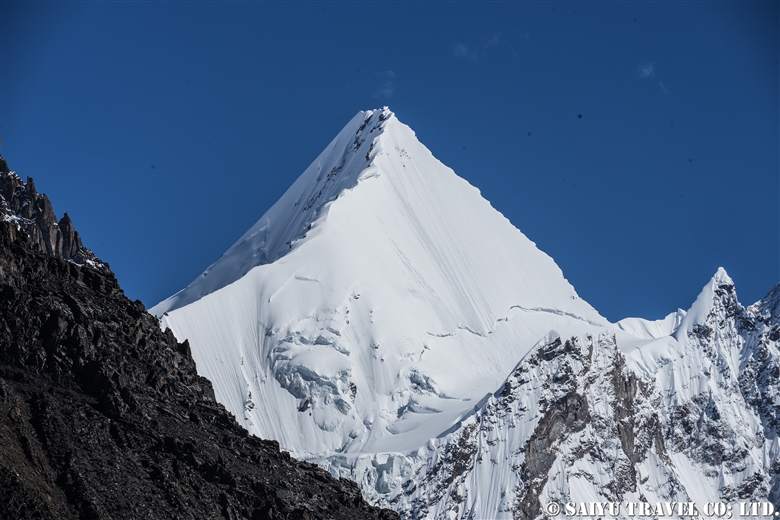
Angel Sar (6,858m) is a beauty, just Northwest of K2.
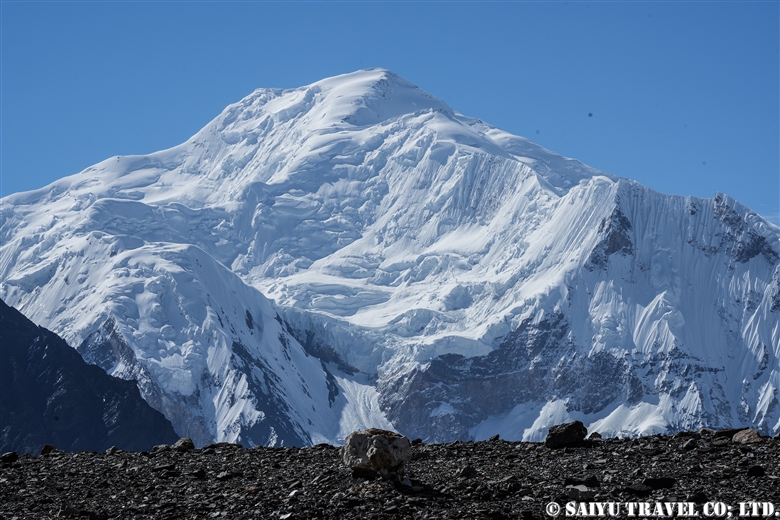
Baltoro Kangri, as seen from Concordia. There are several peaks from west to east, and the highest is said to be 7,312m high.
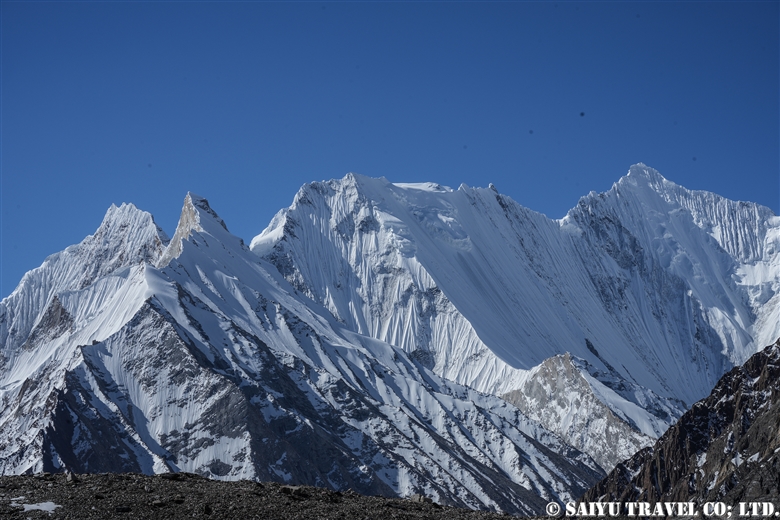
Vigne Peak(6,195m)at left, Khumal Gri(6,851m) at right. Chogolisa (7,668m) is a flat peaked mountain, peeking from behind a wall of ice. Heading west through this valley is the famous Gondogoro-la (Pass), which leads to the Hushe Valley.
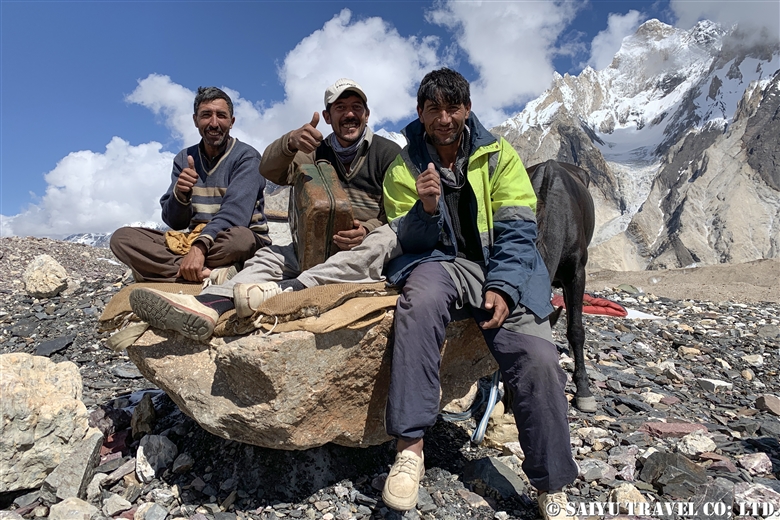
During the day, the porters relax at the campsite. They sing, dance and are just having fun. They spend the entire summer going from Askole to Concordia and Base Camp and back, never returning to their village until the end of the season. We have worked with this same crew for years, and I am so grateful to them.
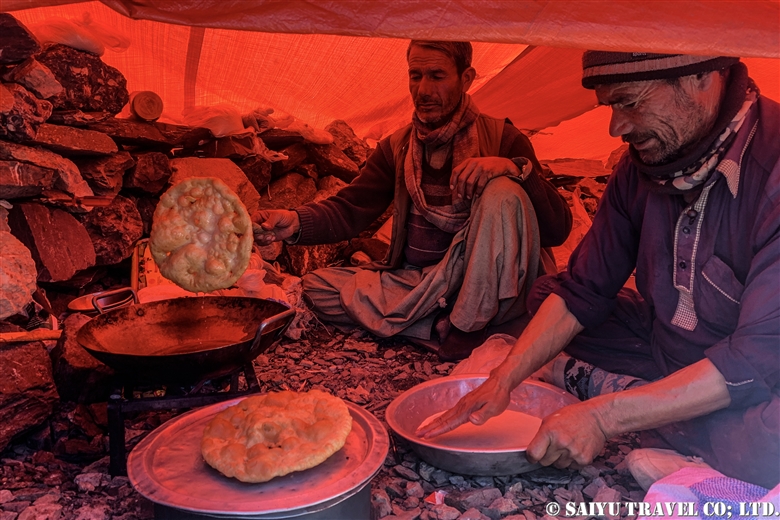
The Balti people make a fried bread called ‘Prantha.’ Do they mean “pratha?” perhaps but, anyway it is a fried bread. When it’s freshly made, it is the best.
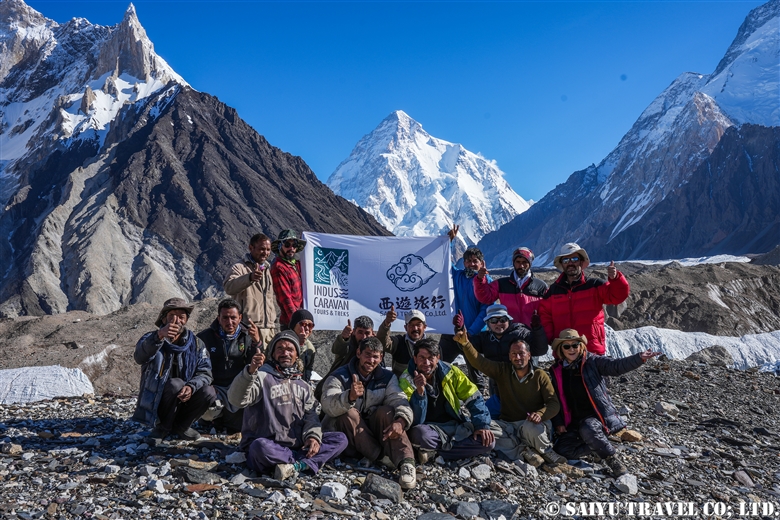
The commemorative photo spot is a must. On June 13, 2022, we arrived in Concordia, the first Baltoro Glacier trek made by Saiyu Travel since the Covid-19 Pandemic.
We are filled with appreciation to the guides, porters and for being able to get back to work. We were the second squad to reach the Concordia this season.
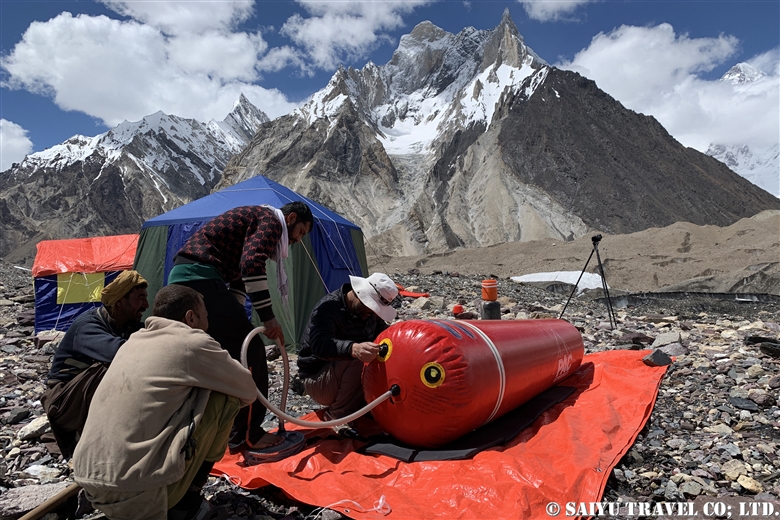
Since we are here, made time for Gamow Bag practice.
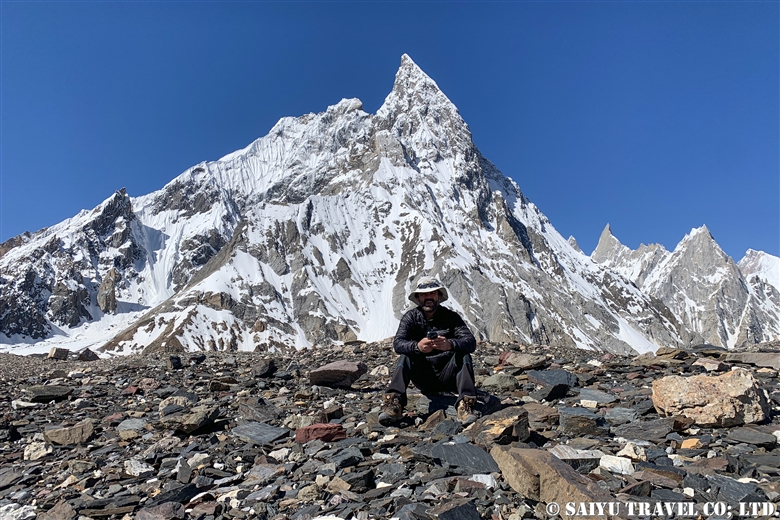
This year’s Concordia has a 4G network! The 4G is provided by the SCO (a mobile company in the mountainous regions of Pakistan) you can pick it up from around Gore II and is being sent out from Concordia. Of course, the best part of this is that you can see the weather forecast!
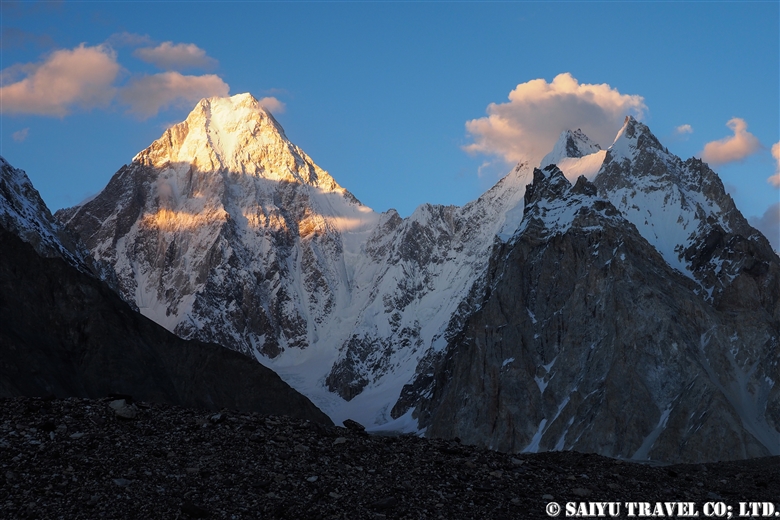
The evening sunlight setting on Gasherbrum Ⅳ(7,925m). These peaks of the Gasherbrum mountain range rise over Concordia.
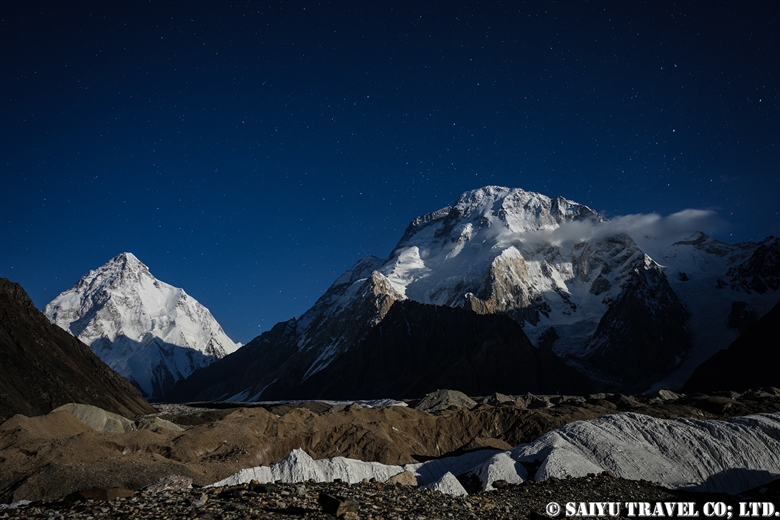
I grabbed a shot of K2 and Broad Peak, just before the moonrise.

On the third night, we could finally get a scene of the moon and starry sky over K2. The moonlight illuminates K2 just as it gets dark.
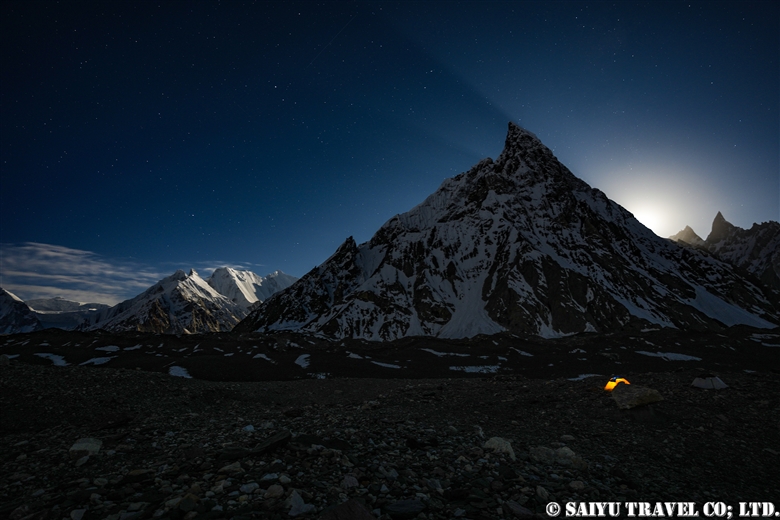
Mitre peak (6,010m) is to the south of the campsite. This is the moon rising, not the sunrise.
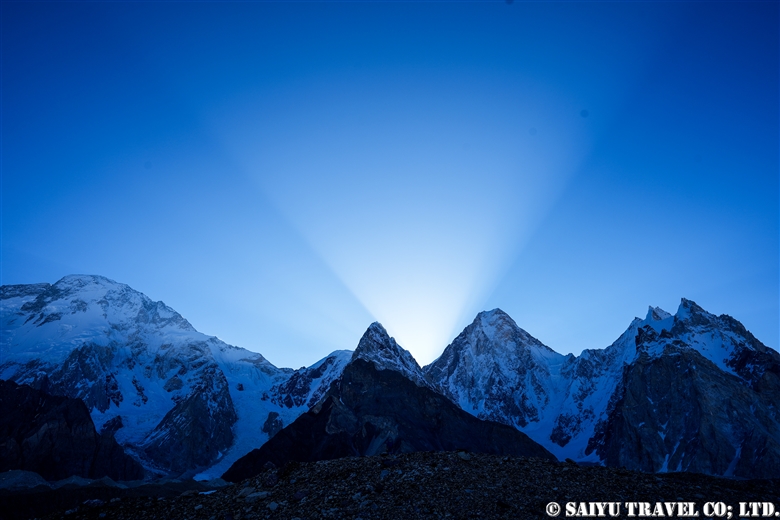
This is daybreak hitting the Gasherbrum Mountains.
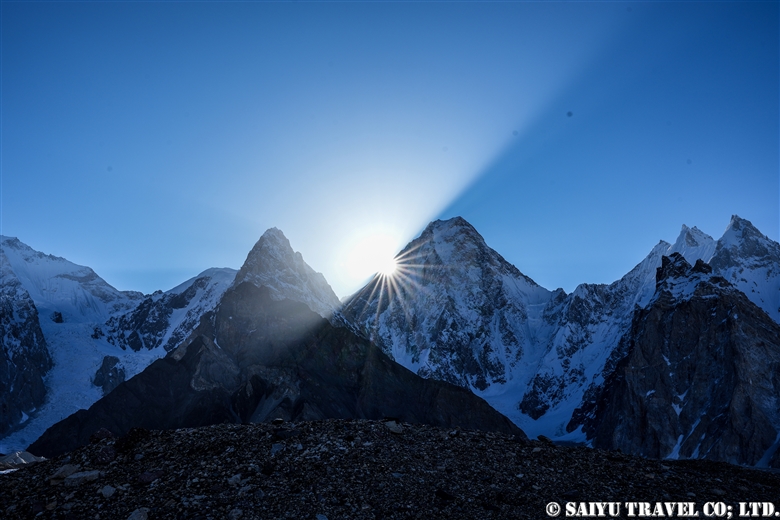
Gasherbrum IV peak shoulders the dramatic sunrise.
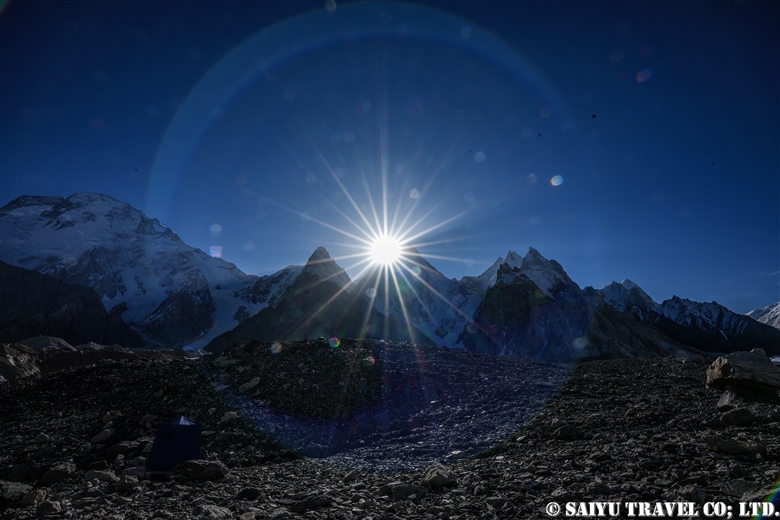
Welcoming the sunrise at Concordia.
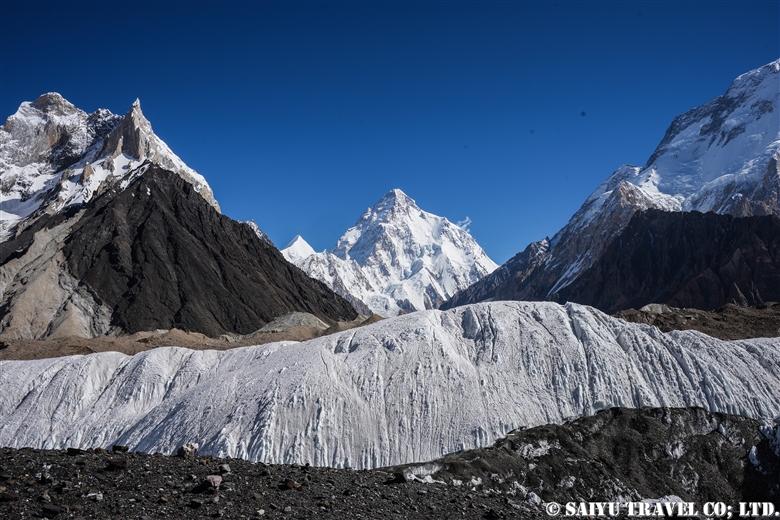
Today’s weather – Clear.
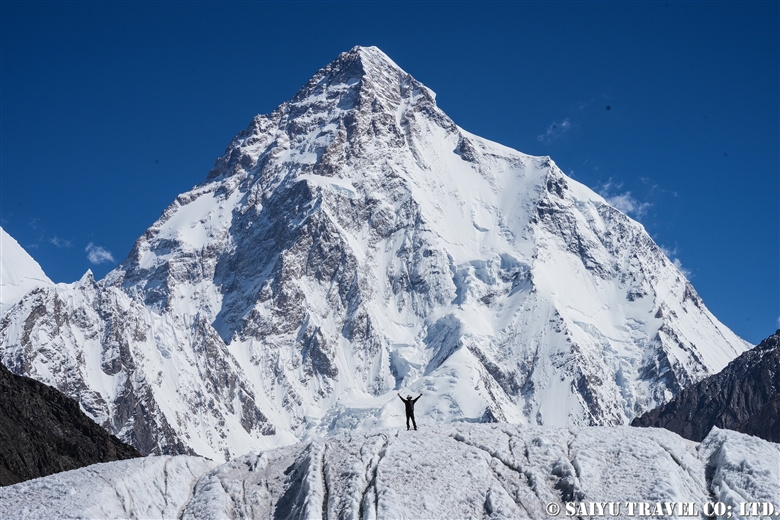
The fine weather continues, and there was plenty of time for the staff to get commemorative photos. Then it was time to say bye to K2 and leave.
It was like a dream, and we left Concordia the next day.
Image & Text: Mariko SAWADA
Trek Date: Mid-JUN 2022
*The altitudes and distances traveled from site to site that are listed, are based on our own measurements and GPS equipment. Please note that these may differ from other official books or reference materials.
*Contact us, Indus Caravan for more information or to make arrangements for your Baltoro Glacier trek.
Category : - Baltoro Glacier & Concordia > - Baltoro Glacier & Concordia > ◆ Gilgit-Baltistan > ◇ Mountain of PakistanTag : Indus Caravan , Saiyu Travel Pakistan , K2 & Baltoro Trek , GoreⅡ , Pakistan Travel company , Gore2 , Pakistan tour operator , Gasherbrum , K2 , Pakistan Photography Tour , Mustagh Tower , Pakistan Blog , Baltoro Glacier , Pakistan Travel Blog , Baltoro Trekking , Sheosar Lake , Concordia , Travel Pakistan Blog , Broad peak






